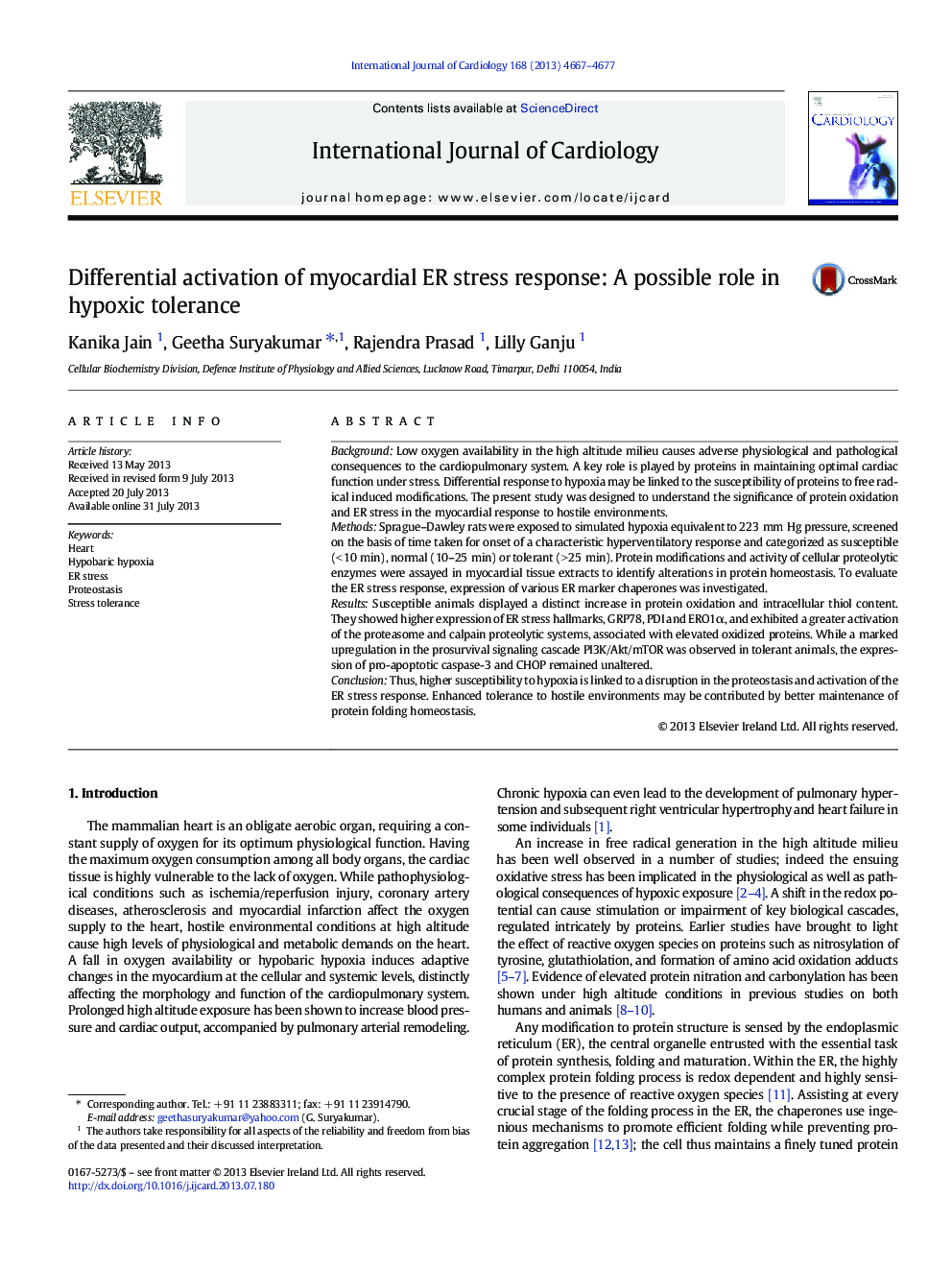| Article ID | Journal | Published Year | Pages | File Type |
|---|---|---|---|---|
| 5973344 | International Journal of Cardiology | 2013 | 11 Pages |
BackgroundLow oxygen availability in the high altitude milieu causes adverse physiological and pathological consequences to the cardiopulmonary system. A key role is played by proteins in maintaining optimal cardiac function under stress. Differential response to hypoxia may be linked to the susceptibility of proteins to free radical induced modifications. The present study was designed to understand the significance of protein oxidation and ER stress in the myocardial response to hostile environments.MethodsSprague-Dawley rats were exposed to simulated hypoxia equivalent to 223 mm Hg pressure, screened on the basis of time taken for onset of a characteristic hyperventilatory response and categorized as susceptible (< 10 min), normal (10-25 min) or tolerant (> 25 min). Protein modifications and activity of cellular proteolytic enzymes were assayed in myocardial tissue extracts to identify alterations in protein homeostasis. To evaluate the ER stress response, expression of various ER marker chaperones was investigated.ResultsSusceptible animals displayed a distinct increase in protein oxidation and intracellular thiol content. They showed higher expression of ER stress hallmarks, GRP78, PDI and ERO1α, and exhibited a greater activation of the proteasome and calpain proteolytic systems, associated with elevated oxidized proteins. While a marked upregulation in the prosurvival signaling cascade PI3K/Akt/mTOR was observed in tolerant animals, the expression of pro-apoptotic caspase-3 and CHOP remained unaltered.ConclusionThus, higher susceptibility to hypoxia is linked to a disruption in the proteostasis and activation of the ER stress response. Enhanced tolerance to hostile environments may be contributed by better maintenance of protein folding homeostasis.
